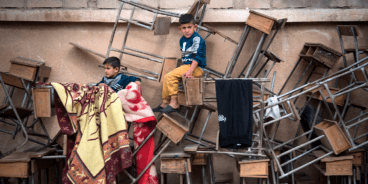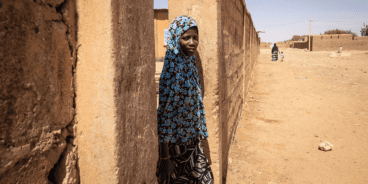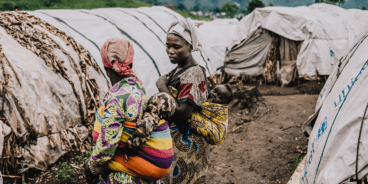
UN Early Warning and Responses to Mass Atrocities
The 2005 World Summit Agreement on the responsibility to protect (R2P) called for “support[ing] the United Nations in establishing an early warning capability” to inform timely and decisive action. A central element to the United Nations(UN) Secretary-General’s plans to strengthen early warning is the creation of a joint office of the Special Adviser on the Prevention of Genocide (SAPG) and the Special Adviser with a focus on R2P. The office would be linked to an interagency and interdepartmental mechanism that will consider policy options to be presented to the Secretary-General. To inform consideration of these proposals, the Global Centre for the Responsibility to Protect and the International Coalition for the Responsibility to Protect convened a panel of former senior UN officials, along with the Special Adviser with a focus on R2P, to reflect on how the UN has reacted to past warnings of mass atrocities. The discussion explored the following themes.
Role of the Secretary-General and the UN Secretariat. The panelists recognized that the UN Secretary-General –as the public face of the organization– is pivotal in bringing attention to situations at risk of mass atrocities. They also highlighted the importance of engagement by others within the UN system, notably the heads of departments and agencies that are able to make use of their access or presence on the ground. Although the voice of the High Commissioner for Human Rights was deemed to be essential, the participants recognized that R2P also involves other dimensions of the Secretariat, ranging from humanitarian and political affairs, to peacekeeping. As one panelist put it: there is strength in the use of several voices – and there is a need to be “clever” in the division of labor. Panelists also emphasized the role of the Secretariat in mobilizing the political will of the Security Council. This starts at the point of exerting pressure on key Council members to come forward with information –often beyond the reach of the UN Secretariat– on potential and/or unfolding crises, to reminding the Council of its R2P obligations. An active UN Secretariat could help to generate information to form the basis of a discussion of policy options. The precedent of the SAPG meeting with each incoming president of the Council was cited as a positive step in this regard.
Tools and Measures for the Prevention of Mass Atrocities. R2P needs to be understood as continuous engagement through a range of measures and not as intervention responding to one triggering event. One form of engagement supported by the panelists was fact-finding missions. Through the Office of the High Commissioner for Human Rights, or the Secretary-General, a fact-finding mission can be quickly deployed and sound the alarm of an impending crisis; its presence can also help to de-escalate a crisis. The participants also emphasized that the Security Council must be encouraged to make greater use of its Article 34 authority to investigate situations. The use of troops to protect against atrocities was also discussed, with a focus on Operation Artemis deployed in the Democratic Republic of Congo in 2003. At that point, the manipulation of tribal alignments by various political interests and the weight of natural resources in feeding the conflict were perceived as major risks in escalating the violence to the point of mass atrocities. The deployment of troops was successful both in quelling the immediate violence, and in seizing the attention of the international community. Yet, the decision to deploy forces was not devoid of risks: there was fear that the ongoing violence would be simply displaced, that resources for the deployment would not be forthcoming, and equally important, that it would fail to meet the expectations for protection on the ground. A key lesson drawn from this experience was that the security of a population from atrocities cannot be guaranteed by short-term measures. There was agreement on the point that the only lasting solution is that of state-provided protection, but the participants also emphasized the need to capitalize on such moments to build viable and accountable capacities to protect.
Possibilities for expanding the mandate of the SAPG to include other atrocity crimes. The question of whether the mandate for “prevention of genocide” should be extended to encompass other crimes covered under R2P, namely, war crimes, crimes against humanity and ethnic cleansing, was also explored. Attention was drawn to the challenge of the “genocide” perspective: while this term has a powerful mobilizing political effect, its legal definition is quite narrow. Some of the practical difficulties of this perspective were also highlighted: invoking the term “genocide” can create the impression that robust intervention will be forthcoming, complicating in turn the consideration of other measures and tools. While one panelist considered that there may be benefits to maintaining distinct mandates for the SAPG and the Special Adviser with a focus on R2P, the majority found merit in the proposal to merge the two.
The discussion on the origin of the mandate of the SAPG revealed that the intent had not been to narrowly focus on genocide. Indeed, former Secretary-General Kofi Annan’s five point action plan for genocide prevention, announced in April 2007, described it as intended to address not only genocide but “mass murder and other large-scale human rights violations, such as ethnic cleansing,” recognizing that efforts to prevent genocide must occur in the context of preventing other crimes too. [Nor is the language of Security Council Resolution 1366, the source of authority for the SAPG’s mandate, so limited. In that resolution, the Council “invites the Secretary-General to refer to the Council information and analyses from within the United Nations system on cases of serious violations of international law, including international humanitarian law and human rights law and on potential conflict situations arising, inter alia, from ethnic, religious and territorial disputes, poverty and lack of development.”] The joining of the offices, and the joining of mandates, would potentially also mean a dual mandate from the Security Council (the basis for the SAPG mandate) and the General Assembly (the call for strengthened early warning for R2P situations is set forth in the World Summit Outcome Document adopted by the GA). Such a dual mandate would reflect that the General Assembly, along with the Security Council, must be engaged.
Characteristics for the joint office. One function considered for the joint office would be to serve as a trigger to “engage the system” when national authorities are manifestly failing to protect their populations. This would mean bringing together departments and agencies at the Under-Secretary-General level, to discuss policy options to present to the SG. The ultimate goal would be the crafting of an early and flexible strategy for each case. The office would also assess information already available from within the UN system from the perspective of the risk of the R2P crimes. Consideration was finally given to whether the office should have a visible public role. While the importance of the office drawing information not only from the UN system, but also from public sources such as NGOs and the media was acknowledged, the question of whether and when the office should have a public advocacy role was left unresolved. As to whether an outspoken role would have the desired impact, one panelist said “it depends.” Some public mobilization can help in some cases but in other instances it can complicate matters. Moreover, the SAPG may have very good access as a result of quiet diplomacy. The fact that there are many actors within the system that can be engaged for various roles –public and private –remains an important consideration.
Speakers:
-
-
- Jean-Marie Guéhenno, Former Under-Secretary-General for Peacekeeping Operations
- Bertram G Ramcharan, Former UN High Commissioner for Human Rights (ad interim)
- Edward Mortimer, Former Director of Communications in the Executive Office of the United Nations Secretary-General
-
Discussant:
-
-
- Edward C. Luck, Special Adviser with a focus on R2P
-
Chair:
-
-
- Professor Thomas G. Weiss, Presidential Professor and Director Ralph Bunche Institute, Graduate Center, CUNY
-
Related Content


